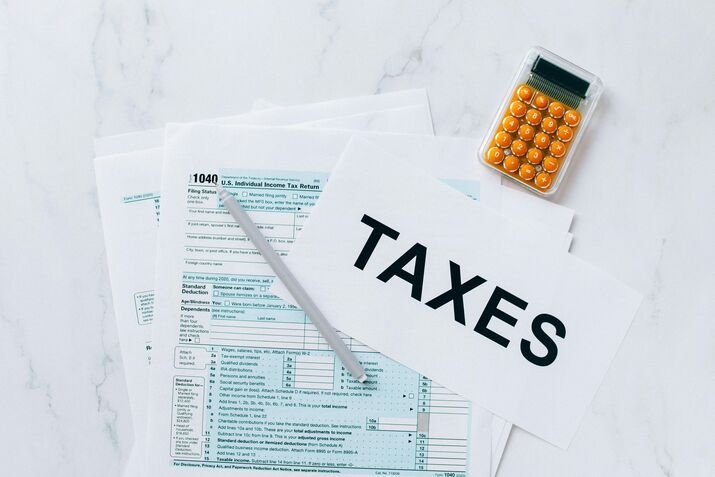When it comes to the United States tax system, income tax occupies the utmost significance. Having a thorough knowledge of how income tax works will, therefore, help any employee, small business owner, or freelance professional stay compliant and avoid falling into the trap of legal issues.
Here, we’ll guide you through all the basic points of income tax in the USA. Specifically, we’ll explain how it works, who needs to pay it, and, most importantly, how to file a tax return easily.
What Is Income Tax?
Your income tax is the tax imposed on earnings. It is an amount that is paid to usually two bodies: the federal government and the state government. The amount you will have to pay depends on your income, whether you are filing jointly or separately, and the deductions or credits that can be claimed.
At the federal level, the IRS holds the authority to collect income taxes. As a result, millions of Americans file tax returns each year to report their income and fulfill their tax obligations.
Who Has to Pay Income Tax?
In general, if you earn money in the U.S., you will most likely need to file a tax return. Specifically, the following are the common groups who are required to pay income taxes:
- Those with wages or salaries from employment
- Freelancers and contractors, that is, self-employed individuals
- Business owners, LLCs, corporations, and the like
- Those earning income from investments or from capital gains, dividends, or rents
- Retirees who receive pensions and taxable Social Security
- Even non-resident aliens may have to pay U. S. income tax if they earn income from U. S. sources.
How Income Tax Is Calculated
The U.S. uses a progressive tax system, meaning it taxes higher-income individuals at higher rates. The U.S. Internal Revenue Service sets the tax brackets and updates them regularly. In 2025, the federal income tax rates range from 10% to 37%.
Calculating the tax is a matter of doing the following:
- Take your gross income – the total amount you earned
- Subtract adjustments – such as student loan interest or retirement contributions
- What you end up with is your Adjusted Gross Income (AGI)
- Next, subtract standard deductions or itemized deductions
- What’s left is taxable income.
Then, you apply the applicable tax rates to your taxable income. Finally, you subtract any tax credits you qualify for to determine the amount you owe.

Taxable types of income
All incomes are not treated equally. Here is a list of income categories that are mostly taxable under income tax:
Wages or salaries
Self-employment income
Interest and dividends
Capital gains
Unemployment benefits
Rental income
Tips, commissions, and bonuses
Some types of income may be exempt from federal taxes, such as gifts or specific insurance payouts.
Federal vs. State Income Tax
After paying federal income tax, most states also levy income tax. But nine states have no state income tax, including Texas, Florida, and Nevada.
States use a flat rate where everyone pays the same percentage. Progressive rates, on the other hand, imply that those with higher earnings will be required to pay more.
Since state tax rules differ, always check the laws in your state to know what you owe.
How to File Your Income Tax Return
The tax year in the U. S. is from January 1 through December 31. Most people have until April 15 of the following year to file income tax returns. If more time is needed, an extension can be requested; that does not, however, extend the payment period.
You can file your return:
- Using online tax software (e.g., TurboTax and H&R Block)
- Through a certified tax pro
- By means of IRS Free File, if eligible
- By mail using paper forms (e.g., Form 1040)
Documents You’ll Need
- Before you begin, prepare the following:
- W-2 forms if you are an employee
- 1099 forms if for freelance work or investment income
- Bank and investment statements
- Receipts for deductible expenses
- Social Security numbers for you and your dependents
This expedites the filing process.
Tax Credits and Deductions To Reduce Your Tax Liability
Deductions and credits are ways you can lower your tax bills. They either reduce tax gains or diminish actual tax payment.
Common Deductions
- Standard deduction: $14,600 for single filers in 2025
- Itemized deductions: Mortgage interest, medical expenses, and donations
- Student loan interest
- IRA contribution
- Business expenses for self-employed
Superlative Tax Credits
- Child Tax Credit
- Earned Income Tax Credit (EITC)
- American Opportunity Credit (for Education)
- Energy Efficiency Home Improvement Credits
Credits are generally more valuable than deductions because the credit reduces tax dollar for dollar.
Income Tax for the Self-Employed
If you’re self-employed, you not only must pay income tax but also self-employment tax. Specifically, this tax covers your contributions to both Social Security and Medicare.
Typically, you’ll be making estimated tax payments quarterly in order to avoid any penalties. Specifically, these payments are due in April, June, September, and January.
The good news? Expenses such as the following can be deducted:
- Office supplies
- Home office use
- Travel and meals (connected with business)
- Internet and software
Keep suitable records to justify whatever is claimed and remain audit-ready.
What Happens If You Don’t Pay Income Tax?
For one, failing to file or pay your income taxes on time can lead to several undesirable consequences. Specifically, these include:
- Penalties for late filing and late payment
- Interest for delinquent taxes
- Tax liens and garnishments
- Seizure of assets
- Rarely, criminal prosecutions
If you have trouble paying your taxes, call the IRS sooner rather than later. They do have payment plans and other options that may help you to avoid harsher penalties.
How to Legally Bring Down Income Tax
With that in mind, here are five time-tested methods that can effectively help you reduce your tax bill:
- Max out retirement contributions to 401(k) or IRA accounts
- Use available credits, such as the Child Tax Credit
- Bundle deductions (e.g., medical or charity expenses) into one year
- Keep detailed financial records all year long
- Contact a professional tax preparer to ensure maximum tax savings and to prevent common errors from occurring.
Thoughts in Conclusion
Understanding income tax is a must for every working American. Understanding the rules and preparing ahead can save you some headaches while submitting your return—and maybe some money along the way.
No matter your status—whether you’re working, self-employed, or retired—it’s important to stay informed. By doing so, you can avoid unnecessary stress, missed deadlines, and potential penalties.
